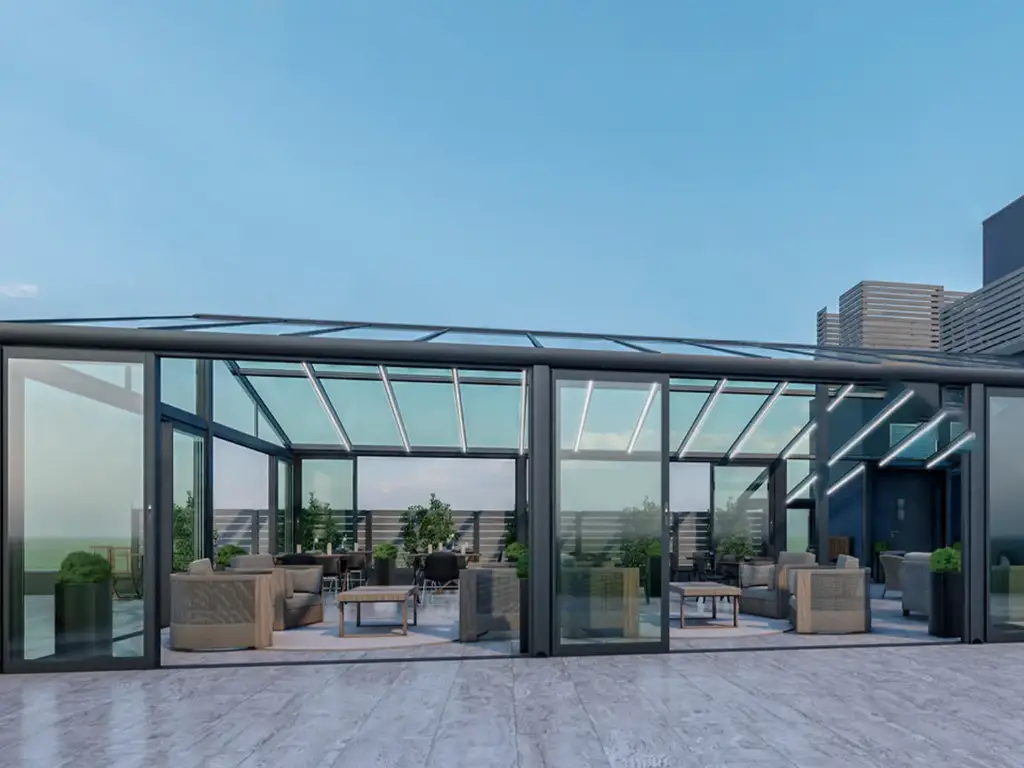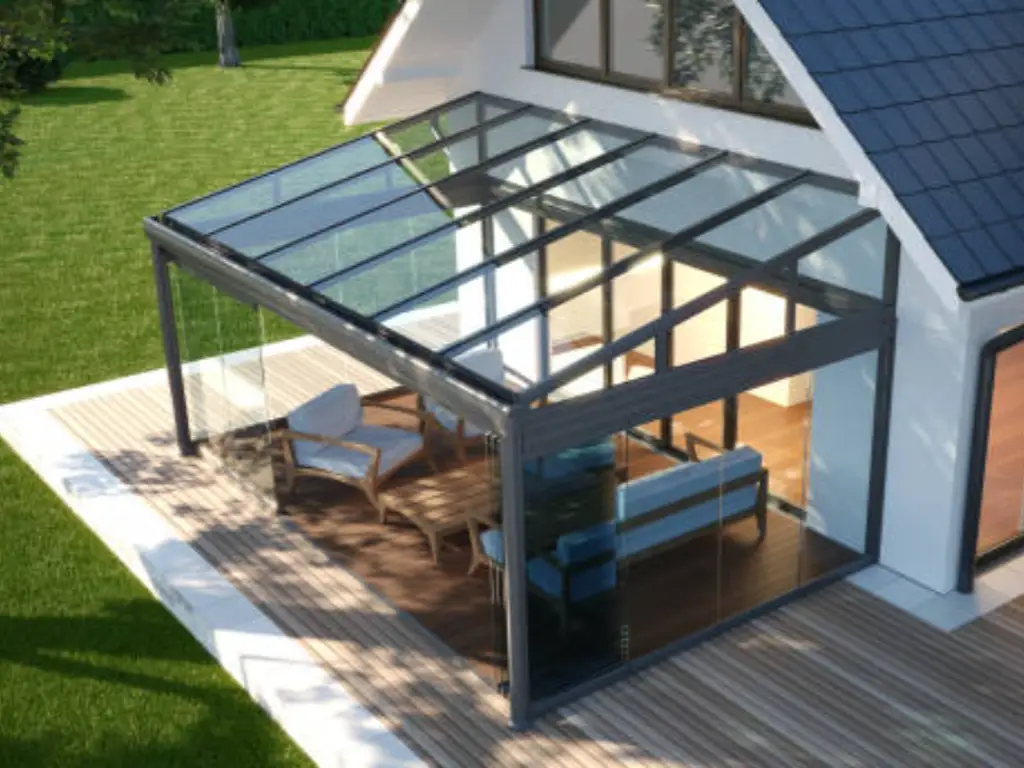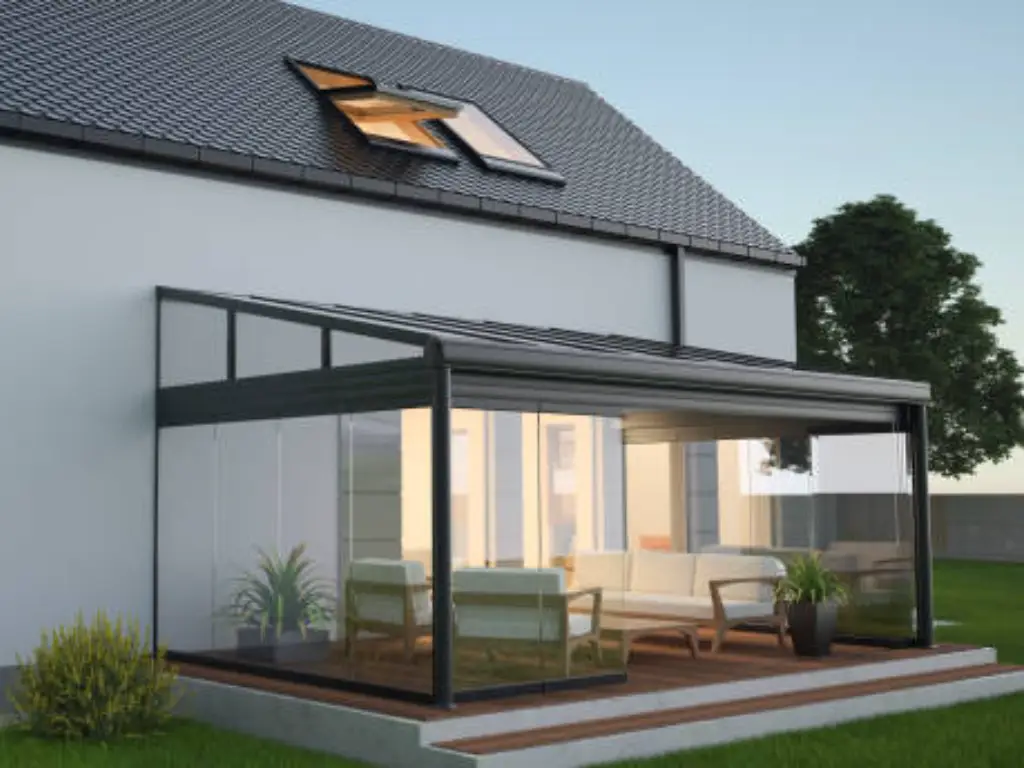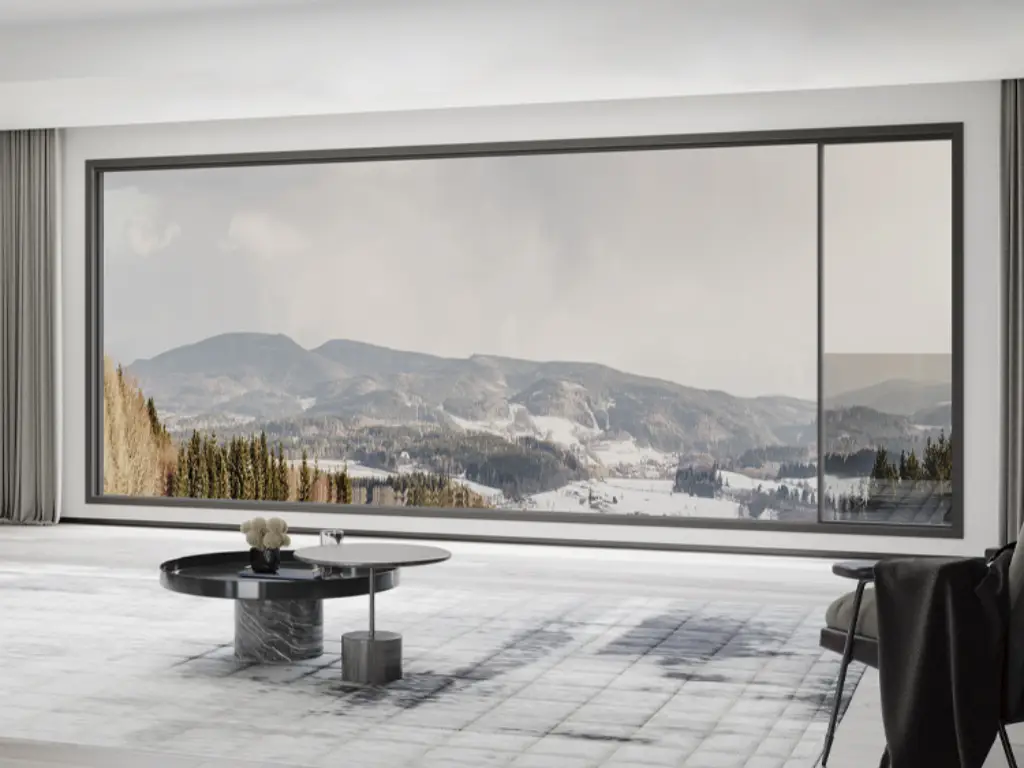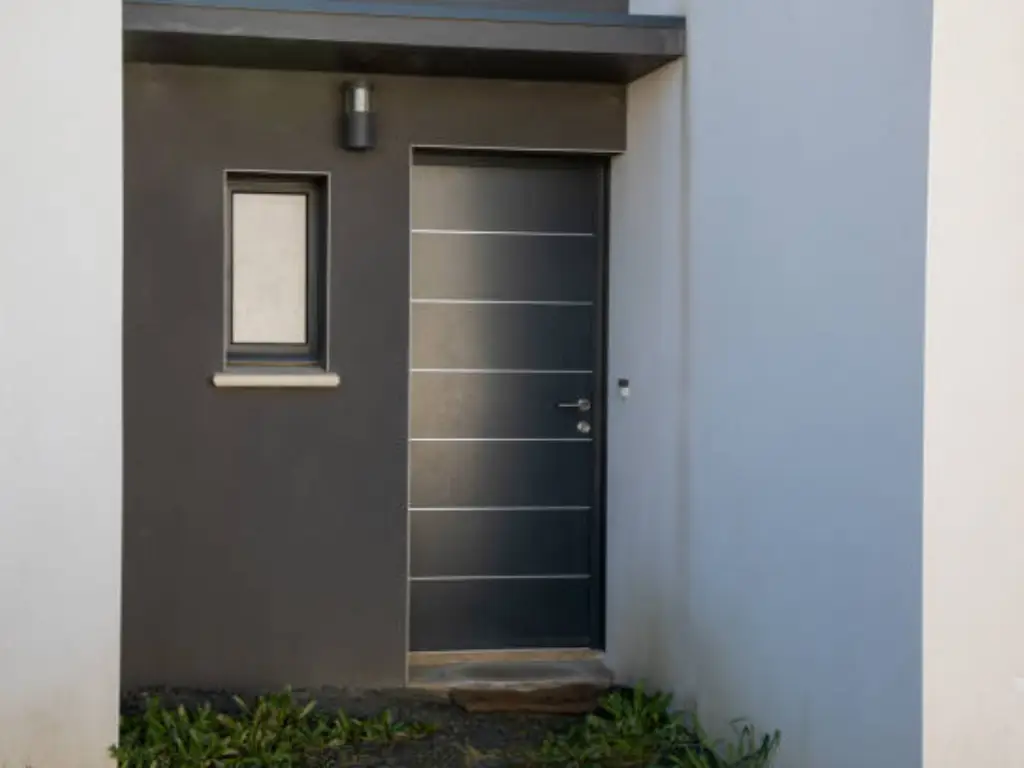When it comes to enhancing the comfort and value of your home, adding a sunroom or patio enclosure is an excellent investment. Both options allow you to enjoy your outdoor space in comfort, regardless of the weather. However, choosing between a sunroom and a patio enclosure can be tricky.
En este artículo, we’ll break down the key differences between sunrooms and patio enclosures, exploring their comfort, design flexibility, costs, and energy efficiency to help you make an informed decision.
Terraza acristalada vs.. Cerramiento de patio: Key Differences
Before diving into the specifics, let’s start by understanding the basic difference between a sunroom and a patio enclosure.
What Is a Sunroom?
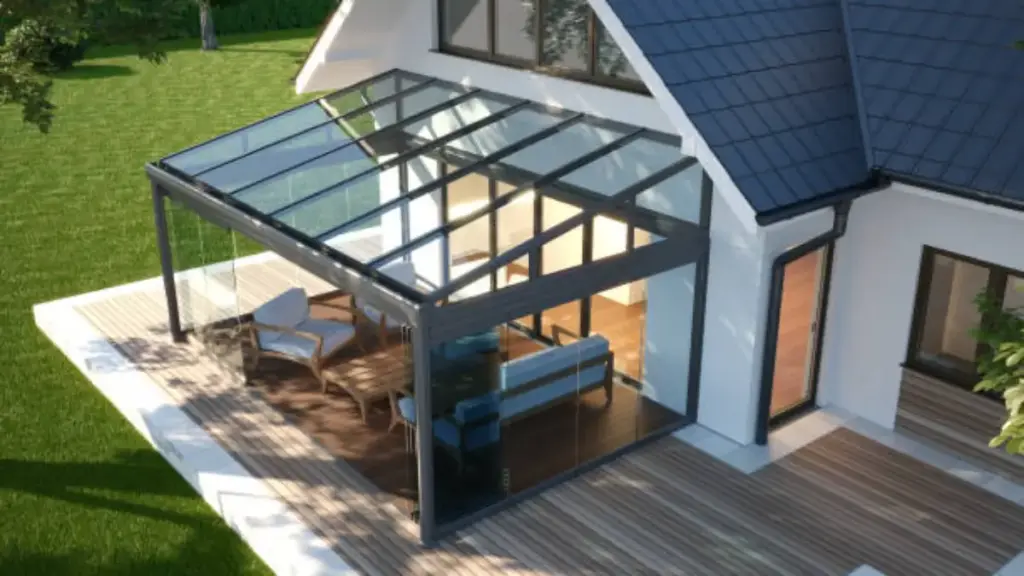
A sunroom is a fully enclosed room that is built onto your home, often featuring large windows or glass walls that allow natural light to flood in. These rooms are typically designed with heating and cooling systems, making them a comfortable, year-round living space. Sunrooms often have a more finished look, with insulation and drywall, giving them the feel of an extension of your home.
The main advantage of a sunroom is that it provides a space that is integrated into your home’s HVAC system, allowing you to control the temperature year-round. Whether it’s a cozy retreat in the winter or a bright, airy room in the summer, sunrooms offer maximum comfort.
What Is a Patio Enclosure?
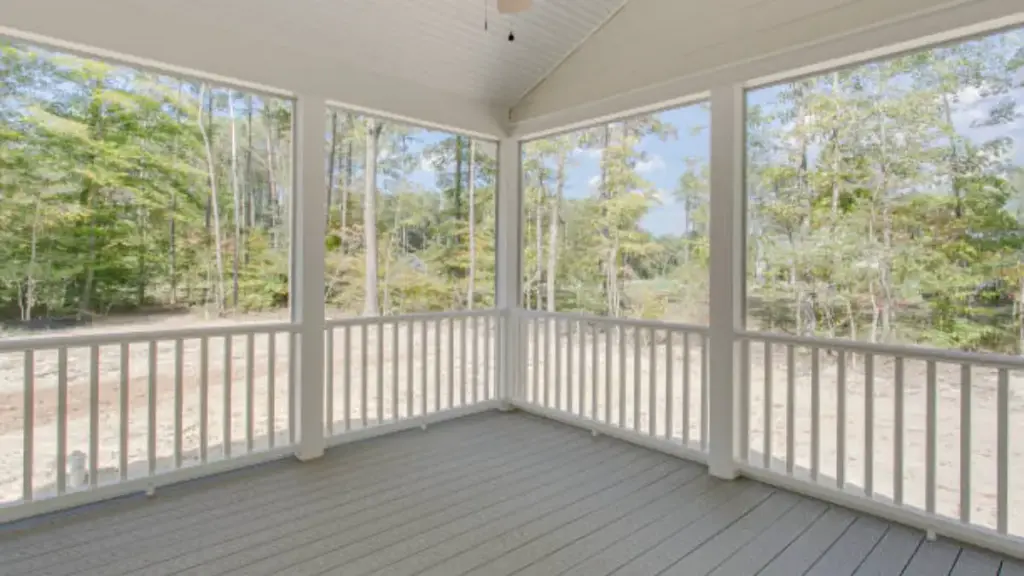
A patio enclosure, on the other hand, is usually a more cost-effective option. It is a structure that encloses an existing outdoor space, like a patio, with materials such as screens, vaso, or a combination of both. Patio enclosures are typically less insulated than sunrooms, and they are often used for seasonal enjoyment. They may feature sliding doors, screened walls, or even retractable windows, allowing for flexibility when the weather changes. While patio enclosures provide a great way to protect your outdoor space from the elements, they are generally not as temperature-controlled as sunrooms.
Quick Comparison: Terraza acristalada vs.. Cerramiento de patio
| Feature | Terraza acristalada | Cerramiento de patio |
| Construction Type | Fully enclosed, part of the home | Encloses an existing patio or outdoor space |
| Insulation | Insulated with HVAC integration | Minimal insulation, seasonal use only |
| Comfort | Year-round comfort, climate-controlled | Seasonal use, less temperature control |
| Flexibilidad de diseño | Highly customizable, blends with home | Limited customization, depending on materials |
| Materials | Vaso, drywall, aislamiento, HVAC | Screen, vaso, aluminum, vinilo |
| Cost | Higher upfront cost | More affordable, lower installation cost |
| Eficiencia energética | High, energy-saving features available | Lower, typically requires additional heating or cooling |
| Maintenance | Higher maintenance (HVAC, aislamiento, etc.) | Lower maintenance, depending on materials |
| Value for Home | Increases home value significantly | Adds value but less than a sunroom |
Comfort and Versatility
One of the first factors to consider is comfort. Sunrooms are designed to be comfortable year-round. Thanks to their insulation and HVAC integration, they can stay warm in the winter and cool in the summer. You can enjoy your sunroom in all seasons, whether you’re curling up with a book during a winter storm or entertaining friends on a summer evening.
In contrast, patio enclosures are more versatile in terms of adaptability. For example, a screened patio enclosure lets you enjoy the fresh air without worrying about insects, while a glass patio enclosure can offer more protection from wind and rain. However, because they often lack insulation, patio enclosures are typically more suitable for seasonal use. On cooler days or evenings, you may not find them as comfortable as a sunroom.
Installation Costs and Maintenance
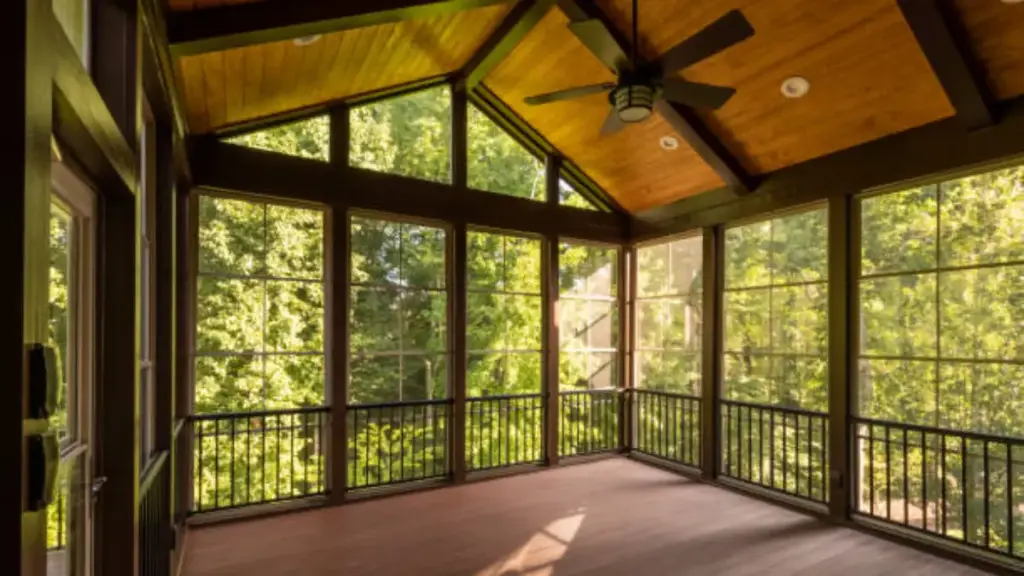
Patio enclosures are typically more affordable than sunrooms, as they involve simpler construction and fewer materials. The cost largely depends on the types of patio enclosure you choose—whether it’s a basic screened patio or a more robust glass or aluminum enclosure. Even with higher-end materials, patio enclosures generally require a lower initial investment compared to a sunroom.
In contrast, sunrooms are more expensive to build due to the complex construction, aislamiento, and HVAC integration required. They often involve additional work, such as electrical installations and custom finishes, which can increase the overall cost.
Maintenance for both options varies: sunrooms may need more attention to HVAC systems and insulation, while patio enclosures usually require less upkeep but still need regular cleaning and occasional repairs.
Design and Customization
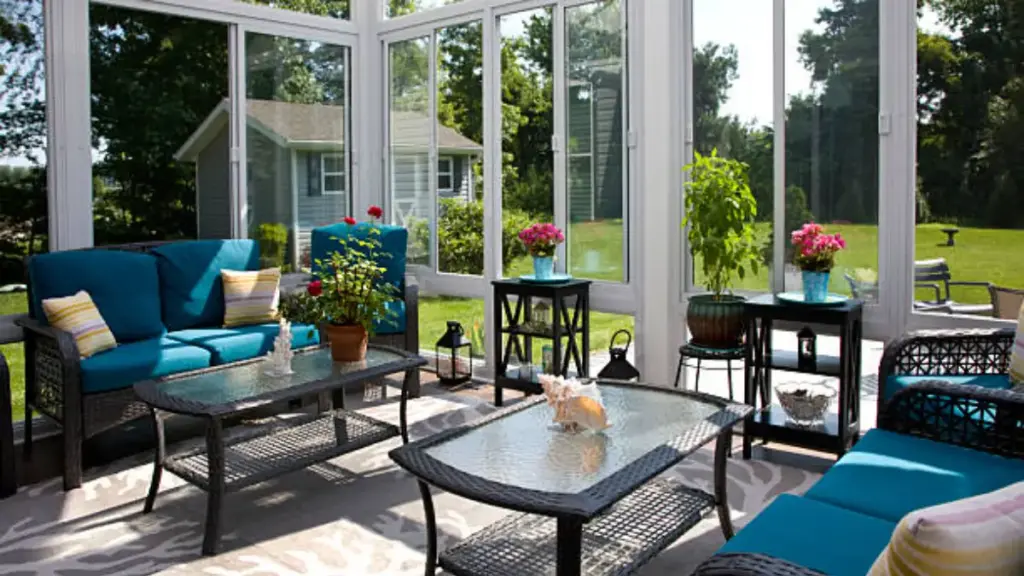
Design flexibility is an important consideration for many homeowners. Sunrooms offer a high degree of customization. You can choose the layout, tamaño, and finish to match your home’s architecture, creating a seamless transition from indoor to outdoor space. Sunrooms can also include features like built-in shelving, lighting fixtures, and flooring to make them feel like a true extension of your home.
With patio enclosures, the design flexibility is a bit more limited. However, many manufacturers offer a variety of enclosure styles, from screened enclosures that allow you to enjoy an open-air experience, to glass enclosures that provide greater protection from the elements. You can also choose between different roof types and flooring materials, but the customization options may not be as extensive as a sunroom.
Energy Efficiency and Cost Savings
When it comes to energy efficiency, sunrooms generally outperform patio enclosures. Since sunrooms are typically part of your home’s insulated structure, they are much more energy-efficient, especially if they feature low-e glass windows and proper sealing. Energy-efficient sunrooms can help you save on heating and cooling costs, making them a better option for those who want to use the space year-round without running up their energy bills.
On the other hand, patio enclosures are generally less energy-efficient, especially if they are made with screens or thin glass. Without insulation or HVAC integration, they are mainly suitable for seasonal use. While adding insulation or upgrading to double-pane glass can improve their energy performance, patio enclosures typically don’t retain heat or cool air as effectively as sunrooms, leading to higher energy costs if used year-round.
Value for Your Home
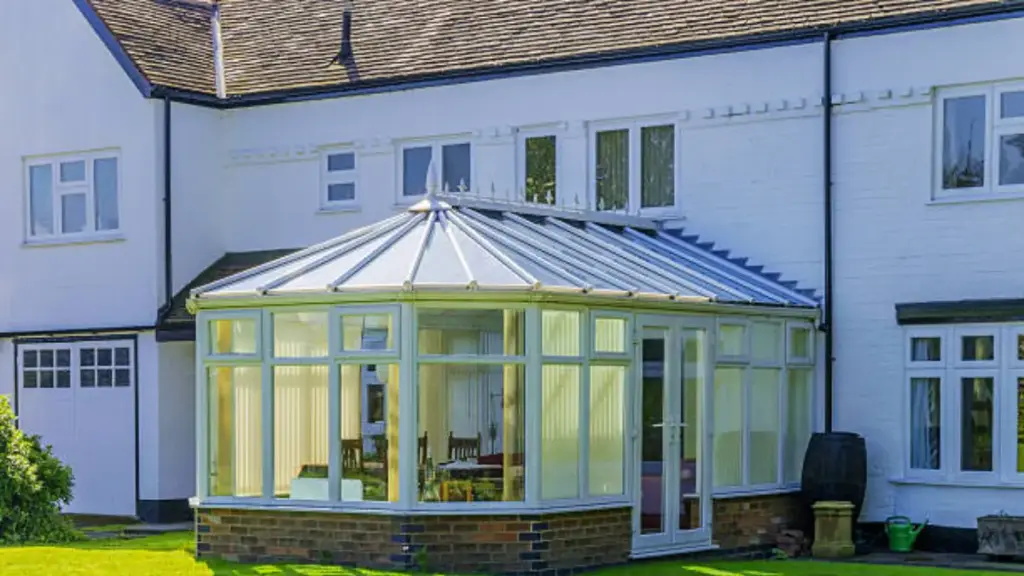
Both a sunroom and a patio enclosure can increase the overall value of your home, but in different ways. A sunroom, with its permanent, finished look, can add substantial value to your property. Real estate agents often view sunrooms as an attractive feature, particularly if they are built to blend seamlessly with the rest of the house. As they offer year-round use, they are seen as an investment that enhances both comfort and home value.
Patio enclosures, while not as likely to provide the same increase in home value as a sunroom, can still be a strong selling point, especially for homeowners who value outdoor living. Their affordability and flexibility make them a good option for buyers who want to enjoy an outdoor space with some protection from the elements but aren’t looking for a fully integrated room like a sunroom.
Choosing the Right Option for Your Home
When deciding between a sunroom and a patio enclosure, several factors should influence your choice:
- Usage: If you’re looking for a year-round living space, a sunroom is ideal due to its insulation and HVAC integration. Patio enclosures, on the other hand, are more suited for seasonal enjoyment.
- Eficiencia energética: Sunrooms offer better energy savings with insulated walls and energy-efficient windows, reducing long-term heating and cooling costs. Patio enclosures may require additional temperature control to maintain comfort.
- Budget: While patio enclosures generally have a lower upfront cost, sunrooms offer more durability and comfort, making them a long-term investment.
- Personalización: A custom sunroom allows you to tailor every aspect, from flooring to window style, ensuring it fits seamlessly with your home’s aesthetic.
For a high-quality, customizable sunroom that fits your exact needs, consider Opuo, a trusted brand in custom sunroom manufacturing.
If you’re ready to transform your home with a sunroom, contact Opuomen today to discuss your project and explore the options available!

